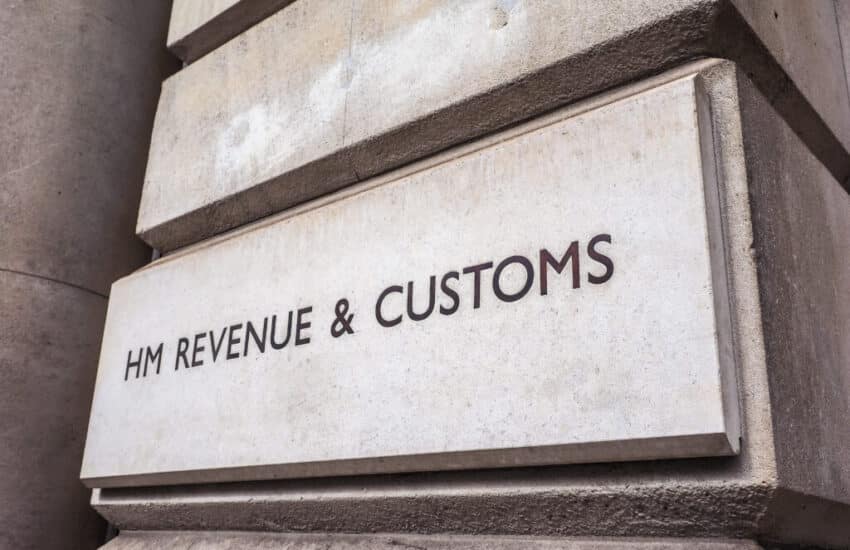HM Revenue & Customs has calculated that in the 2020-21 financial year, £1.1 billion was taken due to fraud and mistakes from two separate programs targeting both larger and smaller companies.
The tax authority has acknowledged that a quarter of the funds provided through a multi-billion tax relief program were lost to fraud and mistakes.
HM Revenue & Customs has significantly increased their estimate of losses stemming from error and fraud for research and development tax incentives for small and mid-sized firms from 2020 to 2021, with a shocking figure of 24.4 per cent being calculated — one of the highest rates of loss across any government spending programme, including Covid-19 emergency schemes.
The National Audit Office’s comptroller & auditor-general, Gareth Davies, qualified his opinion of HMRC’s annual accounts when they were published yesterday, due to the issue at hand.
The prediction of Lord Agnew of Oulton was that “no one from the government would be brought to task over this debacle”.
Agnew of Oulton, a past counter-fraud minister, commented: “This instance is another example of the incompetence that pervades the halls of Whitehall.
Justin Arnesen, Partner in the R&D Tax team at Evelyn Partners comments: “R&D tax reliefs are instrumental in encouraging businesses to invest in R&D, which brings broader benefits to the UK economy in the form of developing new products and creating jobs. However, this latest update from HMRC highlights the size of the problem that HMRC is tackling in its attempts to combat fraud and error within the system. Concern over abuse and boundary-pushing has grown in recent years, and HMRC has introduced a number of measures, including more than doubling the number of people working on R&D compliance and setting up a dedicated R&D Anti-Abuse Unit, to crack-down on unscrupulous advisers and fraudulent and erroneous claims for R&D tax reliefs.
“Improved guidance is part of the wider plan to reduce error and fraud within the R&D regimes, and HMRC has committed to making further improvements as part of its plan. To have an impact, however, considerable changes are required, particularly to guidance around ‘modern/relatable examples’ of both qualifying and non-qualifying activities. This is important as technology is moving at an unprecedented pace – the R&D Guidelines have a qualification example pertaining to the development of a DVD player, for example, this technology is obsolete and provides little relatable guidance/reference points for taxpayers. Guidance improvements will need to be accompanied by plans to bring HMRC caseworkers up to speed on both the new guidance and the technical qualification criteria.
“To tackle this worrying problem, a range of additional changes have been introduced. These range from requiring additional information from the claimant and requiring claims to be made digitally, to reducing the amount of payable relief in the SME scheme. Some of these changes are already in place and others come into effect from August 2023. Even though HMRC will share a further update on its approach to improving compliance with R&D tax reliefs in winter 2023, given the 2 year time lag on the estimates, we may not know for some time whether these measures have had a meaningful impact. It may be that additional measures, such as requiring additional information directly from advisers, or an annual adviser audit, will need to be considered.”
Adding her opinion to the data, Jenny Tragner, Director and Head of Policy at the UK’s leading R&D tax relief consultancy, ForrestBrown, said: “HMRC’s annual report recognises that R&D tax reliefs are vital to the government’s economic strategy, helping to drive innovation, growth and productivity. High levels of non-compliance in such a vital incentive are clearly not acceptable and need to be called out, but it’s equally important to effectively address the root causes.
“The revised estimates in HMRC’s annual report show that fraud makes up a small fraction of non-compliance cases, with the majority relating to other behaviours. The report accepts that this encompasses a range of behaviours, from genuine errors, to carelessness, to negligence. It was expected that HMRC would provide a more detailed breakdown of the scale of these different behaviours, but the report stops short of doing so.
“More detail on the causes of non-compliance is essential if HMRC is to form an effective strategy to address the problem. HMRC has poured new resources into compliance activity, however more work is needed to ensure businesses have access to clear and accurate guidance, and to minimise complexity in the scheme itself.
“Making sure HMRC has both sufficient resources and the right quality of staff in this specialist and complex area would go some way to tackling the issues at source. There are increasing reports of companies with legitimate R&D claims apparently falling foul of an over-zealous stance from HMRC caseworkers. Such cases would fall into non-compliance in HMRC’s data. With this data informing critical policy decisions, this point warrants further investigation.
“Alongside its annual report, HMRC published its “compliance approach to R&D tax reliefs”. It is not clear if this is what the annual report calls its “R&D Compliance Action Plan”. In terms of planned actions, most of the plan is not new. There are commitments to improve guidance and to ‘use existing communication channels to promote uptake of the R&D Advance Assurance’. Both recommendations from the House of Lords finance bill sub-committee earlier this year.
“In the meantime, companies claiming R&D tax relief should continue to expect increased scrutiny of their claims. It’s more important than ever to ensure you understand the definition of R&D for tax purposes, what costs are eligible for relief, and what information you need to provide to HMRC to demonstrate your projects meet the criteria.”


